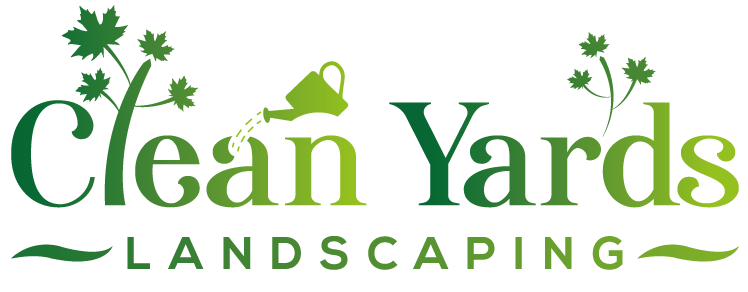Embrun: Best Ergonomic Garden Tools for Tough Clay Soil
Struggling with heavy, compacted clay soil in your Embrun garden? Reduce strain and make digging easier with the right tools. Ready to transform your gardening experience? Request a free quote today!
Quick Takeaways: Ergonomic Gardening in Clay Soil
- Embrun's clay soil is nutrient-rich but dense, poorly draining, and compacts easily.
- Ergonomic tools are designed to reduce physical strain, preventing aches and injuries.
- Look for tools with long handles, comfortable grips, leverage features (like D-handles or wider foot steps), and sturdy construction.
- Specific tools like ergonomic shovels, digging forks, stirrup hoes, and ratchet pruners make tackling clay significantly easier.
- Proper body mechanics (bending knees, keeping back straight) enhance the benefits of ergonomic tools.
- Improving clay soil with organic matter (compost) is key for long-term success.
Introduction: Taming Embrun's Tenacious Clay Without Breaking Your Back
Ah, Embrun! A wonderful place to live and garden... if you can get a shovel into the ground, right? If you've ever felt like your backyard gardening efforts resemble wrestling a stubborn block of wet cement, you're definitely not alone. That infamous heavy clay soil, a challenge shared by our neighbours in Russell and Metcalfe too, is practically a hallmark of landscaping in parts of the Ottawa region. It's dense, it's sticky when wet, and it bakes brick-hard when dry. Fun times!
But before you trade your gardening gloves for physiotherapy appointments, what if there was a smarter way? Forget brute force; let's talk about *finesse*. Introducing the heroes of happy backs and thriving flower beds: ergonomic gardening tools. These aren't just fancy versions of your standard spade or weeder. They are cleverly designed instruments built to work *with* your body, reducing strain and making digging, planting, and weeding significantly easier. Let's dig into how the right tools can help you conquer that clay and make gardening in Embrun the joy it’s meant to be. Find us on Google!
Ready to ease your gardening chores?
Request Your Free QuoteDecoding the Dig: Understanding Clay Soil in Embrun and the Ottawa Region
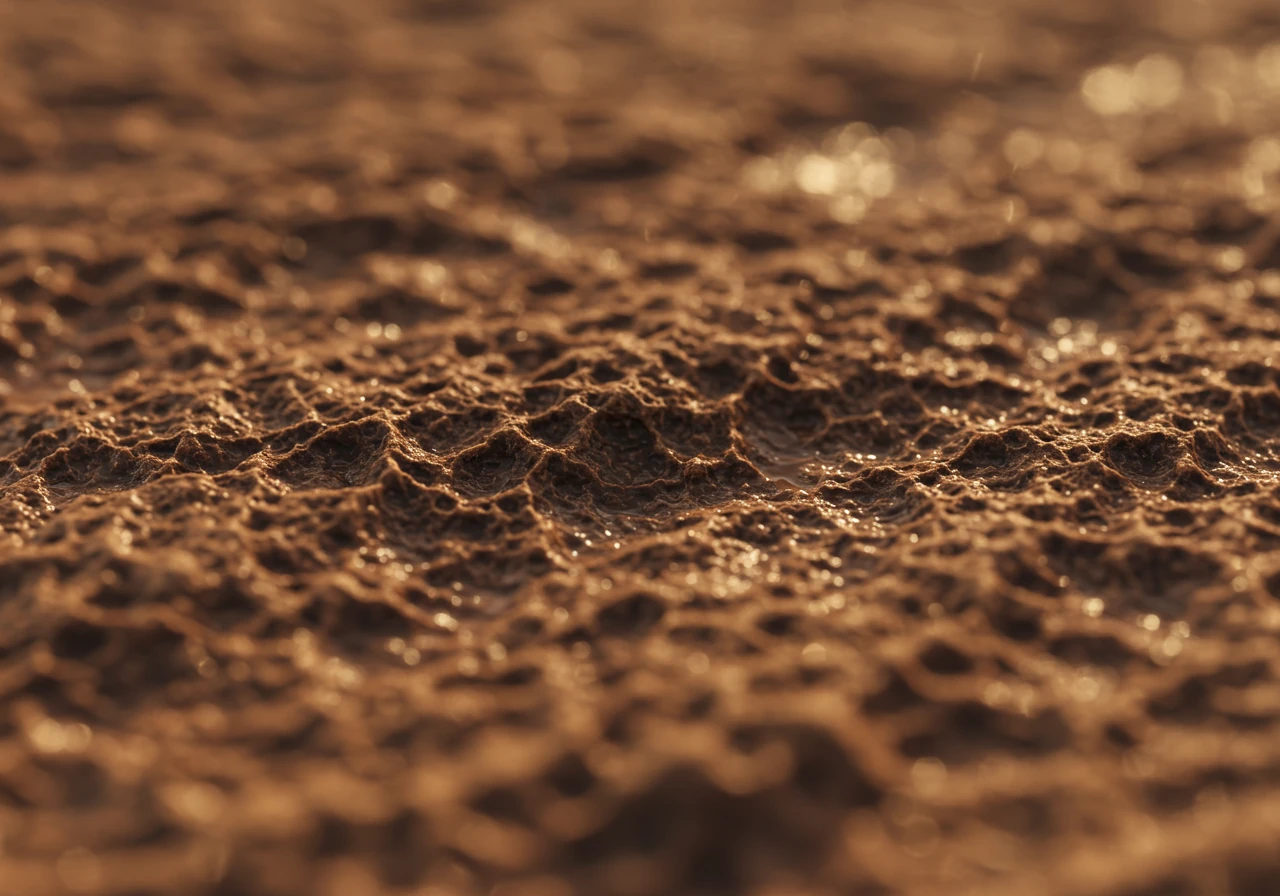
Okay, let's talk dirt – specifically, the heavy clay soil that gives gardeners in Embrun, Greely, and Osgoode a real workout! If you feel like you need a pickaxe just to plant a petunia, you're dealing with classic Ottawa region clay. Think of clay soil as being made up of super tiny particles packed together *really* tightly. This density is what gives clay its unique personality – sometimes helpful, often… challenging.
Believe it or not, clay isn't *all* bad. Because the particles are so small and close, clay soil is fantastic at holding onto nutrients and water. That's the good news! The bad news? It holds onto water *too* well sometimes, leading to poor drainage, soggy roots, and puddles that stick around longer than holiday leftovers. When it dries out, especially after our hot Ottawa summers, it can bake into a rock-hard surface that plant roots (and shovels!) struggle to penetrate. Winter's freeze-thaw cycles can also make compaction worse, squeezing out the air pockets that roots need. For more general soil information, you can consult resources like Agriculture and Agri-Food Canada.
Working with Clay: Aim to dig when the soil is slightly damp – moist enough to work, but dry enough to crumble rather than smear. Avoid working it when very wet (prevents compaction) or bone dry (nearly impossible!).
So, when *can* you actually work this stuff? The golden rule is to avoid digging when it's soaking wet (hello, sticky mud!) or bone dry (hello, concrete!). Aim for that sweet spot when it's slightly damp – moist enough to dig, but dry enough that it crumbles instead of smearing. Improving clay soil is a marathon, not a sprint. Adding organic matter like compost over time is key to improving structure through soil preparation. You also need to combat compaction. Regular lawn aeration is crucial for improving soil health allowing air, water, and nutrients to reach the roots. For lawns struggling on clay, learning how overseeding can make your Embrun lawn thicker is a great strategy combined with aeration.
Healthy plants cope better with tough soil conditions. Keeping up with tasks like applying Embrun deadheading tips for prolonged summer blooms helps your flowering plants stay strong and vigorous. And after severe weather, having an Embrun storm damage garden recovery plan is vital, especially when already compacted clay hinders drainage further. Understanding your soil is the first big step, but if you're feeling overwhelmed by the digging, amending, and ongoing garden maintenance, remember that professional landscaping and garden care services are available to help you create the beautiful, thriving Embrun garden you envision, clay and all!
Your Body Will Thank You: Why Ergonomics Isn't Just a Buzzword in Gardening
Let's be honest, spending an afternoon wrestling with that stubborn Ottawa clay, whether you're digging in Barrhaven or weeding in Nepean, can sometimes feel less like a relaxing hobby and more like preparing for a mud-wrestling championship. If your back groans and your shoulders ache just thinking about it, you’re not alone! This is precisely where *ergonomics* comes marching in like a gardening superhero, and trust us, it's much more useful than just a fancy term.
Think of ergonomics simply as designing tools and tasks to fit the human body comfortably and efficiently. It’s all about working *smarter*, not just *harder*, reducing strain and making the physical aspects of gardening much less taxing. Why does this matter? Because aches, pains, and potential injuries can quickly suck the joy out of tending your beautiful flower beds or vegetable patch. Using ergonomic principles helps you garden longer, safer, and with a lot more enjoyment. For expert gardening advice tailored to our region, consider resources from the Master Gardeners of Ottawa-Carleton.
How to Apply Ergonomics in Your Garden:
- Choose the Right Tools: Look for tools designed with your body in mind. This could mean shovels and rakes with longer handles to minimize bending, trowels with curved or padded grips that reduce wrist strain, or lightweight pruners that lessen hand fatigue during marathon hedge trimming sessions. Telescoping handles are also fantastic for reaching without overstretching. Smart material selection in tools matters!
- Use Proper Body Mechanics: It's not just the tool, but how you use it! Bend at your knees, not your waist, when lifting heavy bags of soil or mulch. Keep your back straight when digging or hoeing. Switch tasks frequently to avoid repetitive strain on one muscle group. And please, take breaks! Your body will genuinely appreciate the downtime.
Ignoring ergonomics is a bit like trying to drive a screw with a hammer – you might eventually get it done, but it’s unnecessarily difficult and could cause damage! Embracing ergonomic tools and techniques means fewer post-gardening aches and a lower risk of developing chronic issues like back pain or tendonitis.
Of course, some gardening projects are just plain big, regardless of how ergonomic your approach is. A major spring overhaul or dealing with seriously overgrown areas can feel overwhelming. If the sheer physical effort seems daunting, remember that professional help is available. Utilizing landscaping and garden maintenance services can take the heaviest burdens off your shoulders. For targeted seasonal help, options like an Embrun yard cleanup service can be a real back-saver. Similarly, folks in Metcalfe facing a jungle situation can look into a Metcalf yard cleanup service to reset their outdoor space. Even specific tasks, such as needing a thorough Metcalf garden clean up service, can be delegated, allowing you to focus on the planting and pottering you love. When hiring any service, it's always wise to understand the scope of work, often detailed in the company's terms and conditions. Our customer feedback confirms the difference professional help makes - check out our thank you page for testimonials.
Ultimately, incorporating ergonomics into your gardening routine, whether through better tools, smarter movements, or getting timely help, is an investment in your own well-being. It helps ensure you can keep enjoying your Ottawa garden for years to come, minus the unnecessary ouches.
Ergonomic Tools for Every Clay Challenge
The Heavy Lifters: Ergonomic Digging Tools for Conquering Clay
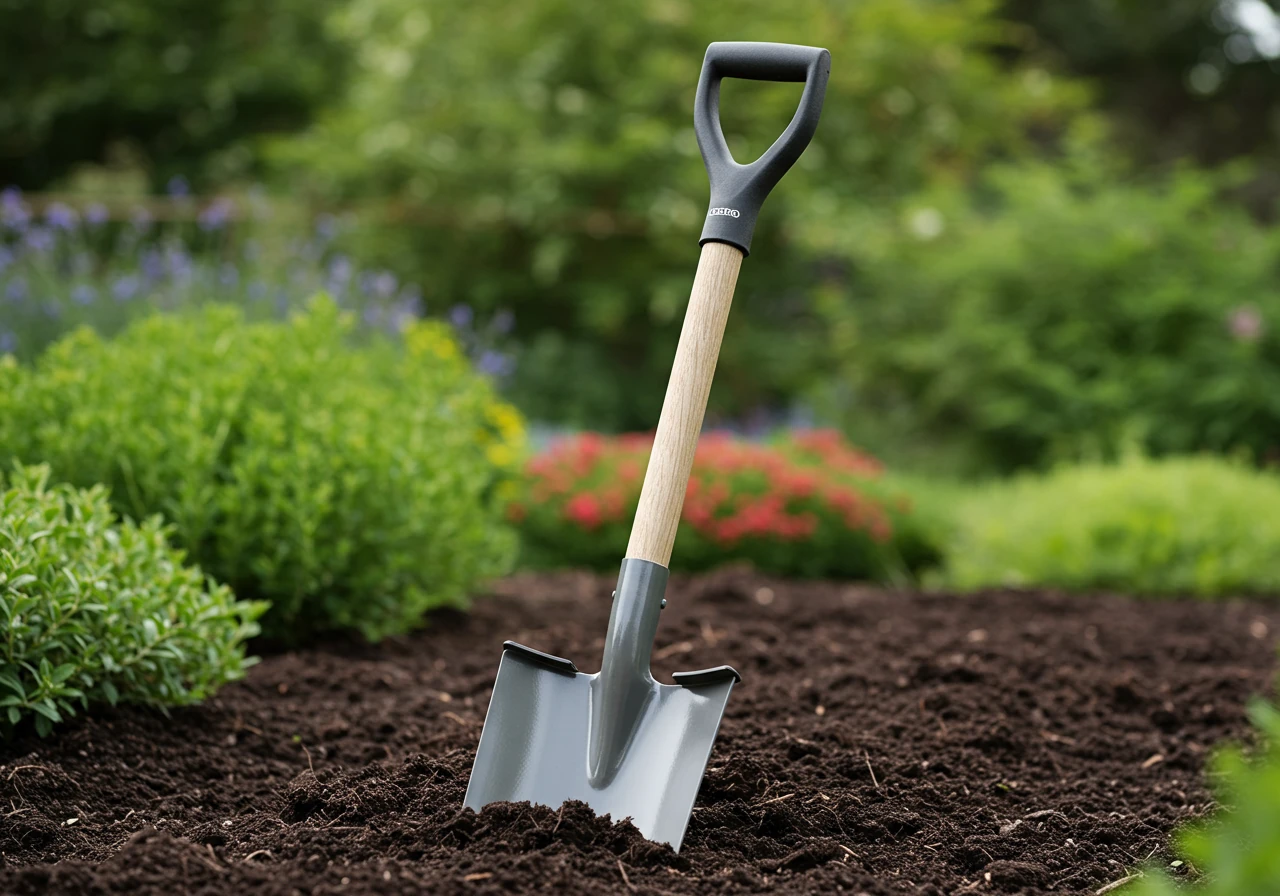
Alright, let's face it: digging into that dense clay soil common around Embrun, Manotick, and Kars can feel like trying to carve granite with a butter knife. Your standard-issue shovel or spade might bend, your back might scream, and your gardening enthusiasm might just… evaporate. But fear not, weary gardener! Equipping yourself with the *right* digging tools – specifically ergonomic ones – can turn this daunting task into a manageable (dare we say, almost enjoyable?) one. These aren't just tools; they're your back's best friends.
So, what makes a digging tool "ergonomic" and why is it better for tackling stubborn clay? Let's break down the heroes:
- Ergonomic Shovels and Spades:
- Longer Handles: Provide better leverage, allowing you to stand straighter. Less bending = happier back!
- Angled/Curved Shafts: Help maintain a more natural posture, reducing back and shoulder strain.
- D-Grips or O-Rings: Allow a comfortable, secure grip, improving control and reducing wrist fatigue. Padded grips are a bonus!
- Wider Foot Platform: Lets you use leg power (not your back!) to drive the blade into the ground.
- Blade Shape & Material: Pointed shovels penetrate clay better. Hardened steel resists bending and sheds sticky clay more easily.
- Ergonomic Digging Forks:
- Brilliant for breaking up large, heavy clods of clay *before* lifting.
- Features mirror ergonomic shovels: long handles, comfy grips (often D-handles), sturdy tines.
- Using a fork first significantly lightens the load for your shovel.
Investing in a quality ergonomic shovel, spade, or digging fork specifically designed for heavy soils is one of the best things you can do for your body and your garden in clay-rich areas.
Of course, even with the best tools, sometimes the job is just *big*. Perhaps you're tackling a major garden renovation, breaking ground for a new large bed, or dealing with years of compaction near a boundary. If a particularly tough spot borders public land, investigating a city property cleanup service might even be relevant for understanding responsibilities. For extensive work on your own land, like clearing a large, neglected area in nearby communities such as Metcalfe, calling in professionals offering a Metcalf garden clean up service can save you a world of effort. Similarly, residents facing large-scale clearing challenges slightly further out might seek a dedicated Marionville property cleanup service. But for day-to-day digging, planting, and amending, ergonomic tools are your champions against the clay!
Cultivating Comfort: Ergonomic Tools for Weeding and Soil Prep
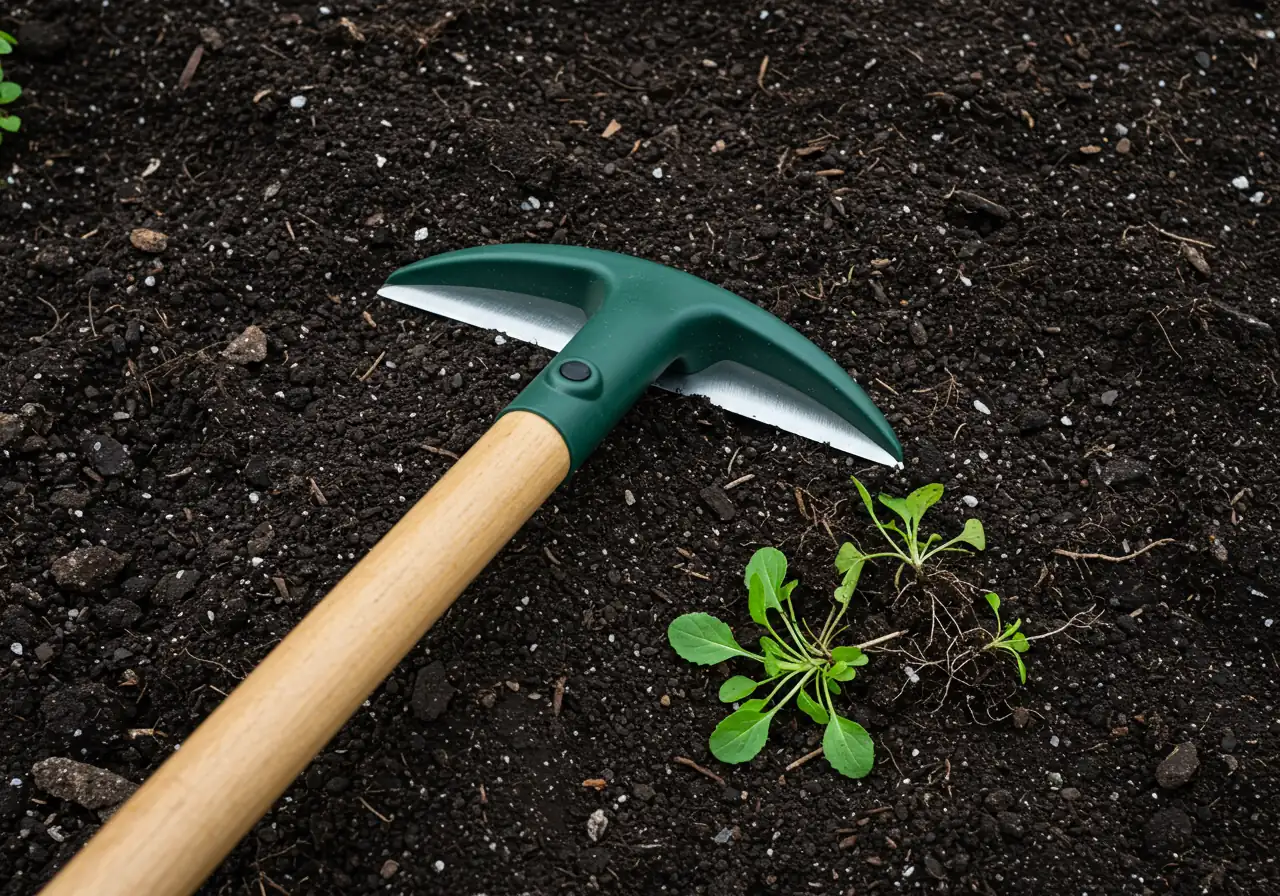
Okay, we've talked about the heavy-duty digging, but what about the ongoing chores? Weeding and keeping that topsoil loose in places like Richmond, where clay can be just as prevalent as charming main streets, often feels like a never-ending battle. If bending, twisting, and yanking stubborn weeds leaves you feeling like you went ten rounds with your garden bed, it’s time to meet the lightweight champions: ergonomic hoes, cultivators, and weeders. These tools are designed to make soil prep and weed patrol less of a back-breaking chore.
What makes these tools your garden allies? It's all about smart design:
- Ergonomic Hoes: Look for oscillating or stirrup heads that glide below the soil, slicing weeds at the root. Longer/telescoping handles let you stand straighter. Comfy grips reduce hand fatigue.
- Ergonomic Cultivators: Hand cultivators often have curved, cushioned grips. Long-handled versions have sharp tines and leverage-friendly handles for loosening soil without excessive bending.
- Ergonomic Weeders: Stand-up weeders use leverage to extract weeds and roots with minimal bending. Hand weeders often use a fulcrum point to pry out taproots, saving wrist strain.
Quick Guide: Using an Ergonomic Stirrup Hoe
- Stand Tall: Adjust the handle (if possible) so you can stand comfortably upright. Grip the handle lightly but securely.
- Skim the Surface: Place the hoe head flat on the soil. Use a smooth push-pull motion, letting the sharp edge glide just under the soil surface (maybe an inch deep). You're slicing, not chopping!
- Weed Watch: Watch as weeds are neatly cut off below ground level. It's oddly satisfying! Work backwards so you don't stomp on your freshly hoed area.
Using these tools doesn't just save your body; it's also great for your garden's ecosystem. Because they make cultivating easier, you're more likely to regularly incorporate compost and amendments into that clay. This gradual improvement boosts soil health naturally. Better soil structure also lays the groundwork for future projects – imagine how much happier new grass will be after professional sod installation on well-prepared ground!
Seeing a tired patch turn into a thriving garden bed thanks to smarter work (and maybe a little help) is incredibly rewarding. Check out some amazing garden transformations to get inspired! Of course, sometimes weeds gain the upper hand, especially in tricky spots bordering neighbours or public areas. If you're dealing with an overwhelming situation near municipal land, looking into a city garden clean up service might clarify responsibilities and options. At Clean Yards, we believe gardening should be enjoyable, not painful. It’s a core part of who we are – you can learn more about us and our commitment to making yard care easier for Ottawa residents. So, invest in a few good ergonomic weeding and cultivating tools – your back, wrists, and beautiful Richmond garden will thank you!
Getting Hands-On (Without the Hurt): Ergonomic Hand Tools
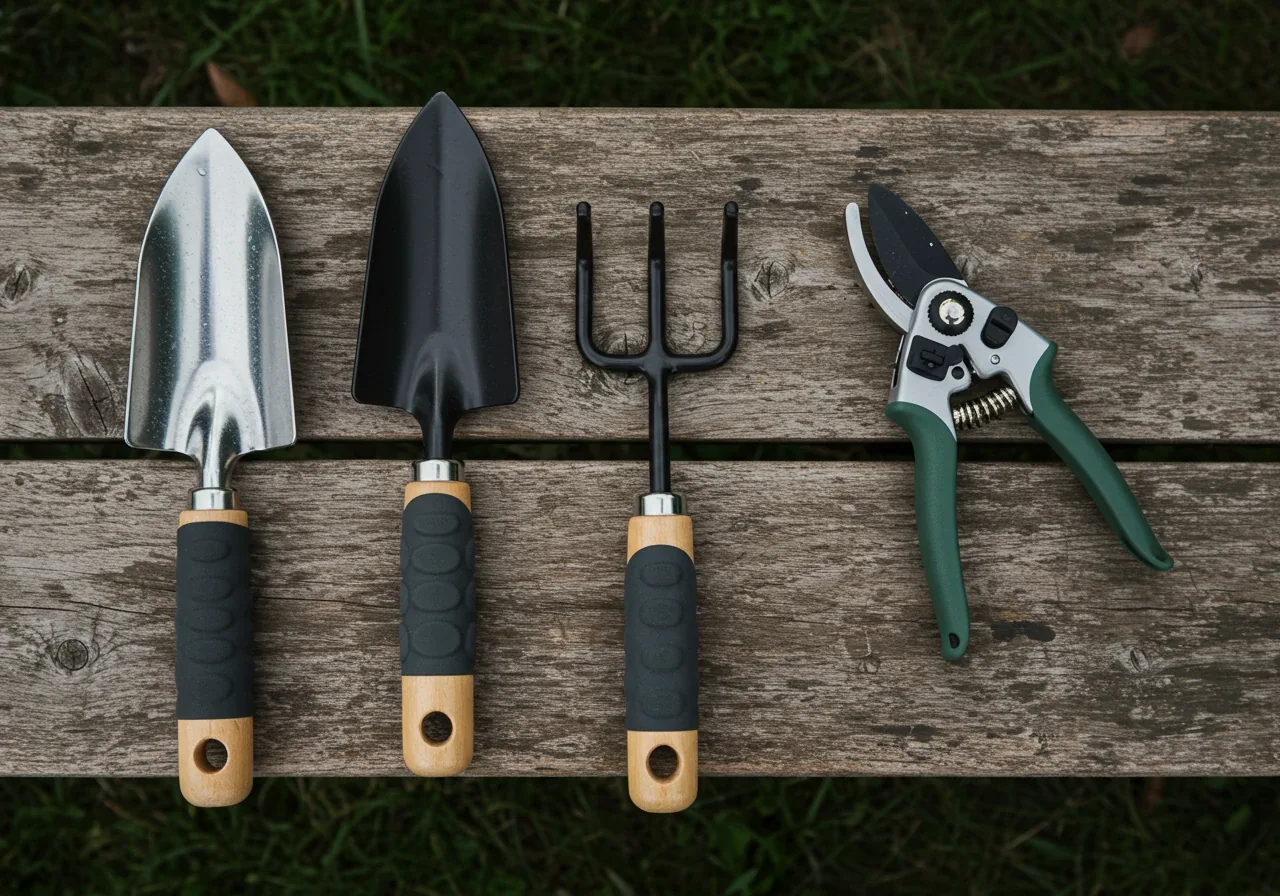
Okay, we’ve covered the big digging tools, but what about the up-close-and-personal work? Planting delicate annuals, transplanting perennials, or trimming back those enthusiastic shrubs – these tasks require finesse, but they can still lead to sore wrists and cramped fingers, especially when battling that persistent Ottawa clay. Ever feel like your hand is seizing up after just a few minutes with a standard trowel? You’re not alone! Thankfully, the ergonomic revolution extends to our smaller garden helpers too.
Ergonomic Trowels & Hand Cultivators:
- Comfort Grips: Soft, non-slip materials, sometimes gel-filled or contoured, reduce pressure points.
- Angled Handles: Keep your wrist in a more neutral, less strained position.
- Sturdy Construction: Polished stainless steel or strong aluminum alloy blades resist bending and shed clay easily.
These features make tasks like popping in new bedding plants for a small garden install project much less of a struggle, even in areas known for tough soil like around Kenmore.
Ergonomic Pruners & Shears:
- Ratchet Mechanisms: Cut thicker branches in stages with less force per squeeze.
- Rotating Handles: Reduce friction and wrist strain by following your hand's natural motion.
- Lightweight Materials & Cushioned Grips: Reduce fatigue during longer pruning sessions.
Keeping your pruners *sharp* is also crucial ergonomics! A dull blade requires much more force, straining your hand and making ragged cuts that are bad for the plant.
These clever hand tools make routine maintenance easier and more comfortable. They are essential companions for keeping things tidy after a professional Ottawa Garden Clean Up Service gets everything back into shape. While these tools are fantastic for detailed work, remember that for large-scale clearing, like tackling an overgrown property line, professional help such as a Metcalf Property Cleanup Service might be the less painful route overall! Investing in good ergonomic hand tools means you can enjoy the *doing* part of gardening more. And if you ever use a professional service, don't hesitate to provide feedback on their work; customer insights on things like tool choices and efficiency help services improve, which is why we value our Estimate Feedback process. Happy (and comfortable) gardening!
Standard vs. Ergonomic Digging Tools: Visualizing the Difference
| Feature | Standard Tool | Ergonomic Tool | Benefit in Clay Soil |
|---|---|---|---|
| Handle Length | Often shorter, requires more bending | Typically longer | Better leverage, less back strain |
| Grip | Basic straight handle | D-handle, O-ring, often padded | Better control, reduced wrist fatigue |
| Shaft | Straight | May be straight, angled, or curved | Improved posture, less overall strain |
| Foot Step | Narrow or non-existent | Wider, reinforced platform | Easier penetration, uses leg power |
| Blade/Tines | Basic steel, may bend/dull easily | Hardened/coated steel, specific shapes (pointed) | Durability, better penetration, less sticking |
| Overall Effort | High strain, potential for injury | Reduced strain, increased efficiency, more comfort | Makes tough digging significantly easier |
Make heavy digging a thing of the past. Explore our professional gardening solutions.
Get Professional Help With Your Garden PrepErgonomic Gardening Quick Tips
Gardening in the Ottawa area, especially wrestling with stubborn soil in places like Nepean, shouldn't feel like training for the Olympics (unless you *really* want it to!). To keep the joy in gardening and the chiropractor at bay, here are some quick ergonomic tips to save your back, wrists, and sanity:
- Choose Wisely, Grasshopper: Look for tools with features like longer or telescoping handles (less bending!), padded or curved grips (happy hands!), and lightweight *yet strong* construction.
- Stand Tall & Leverage: Use your legs and body weight, not just your back and arms. Longer handles on hoes, rakes, and shovels encourage a straighter posture. This applies even during routine lawn care tasks like raking or aerating. Let the tool do the work!
- Bend Ze Knees!: Seriously, channel your inner weightlifter. When lifting bags of soil, mulch, or even heavy pots, bend at your knees and hips, keeping your back straight. Hold the load close to your body. Your spine will thank you later.
- Protect Those Knees: If you're doing ground-level work like planting tiny seedlings or meticulous mulching and edging, use kneeling pads or a garden kneeler seat. It makes a *huge* difference to comfort and prevents unnecessary strain.
- Mix It Up: Don't spend hours doing the exact same repetitive motion. Switch between digging, weeding, and pruning. Vary your movements to avoid overtiring specific muscle groups. Think of it as cross-training for gardeners.
- Take Breaks, People!: Gardening isn't a race. Stand up, stretch, walk around, admire your handiwork, hydrate. Short, regular breaks prevent fatigue and reduce the risk of injury. Plus, you get more time to plan your next garden conquest! Joining a local group like the Ottawa Horticultural Society can also provide motivation and community.
- Sharp Tools = Less Effort: A dull shovel, hoe, or pair of pruners requires *way* more force to use. Keep your tools clean and sharp. It's safer for you and better for your plants too.
- Know When to Call for Backup: Be realistic about the scope of a task. For massive overhauls, extremely compacted areas, or tricky jobs near public boundaries where specific rules might apply (consider the City of Ottawa's resources for related info), sometimes calling in professionals like a city garden maintenance service is the best ergonomic choice – saving your body for the fun parts of gardening!
Timeline: Improving Clay Soil Over Time
Season 1: Assess & Amend
Test soil pH. Begin incorporating compost or well-rotted manure into the top 6-8 inches wherever you plan to plant. Focus on key bed areas.
Season 1-2: Mulch Matters
Apply a 2-3 inch layer of organic mulch (wood chips, shredded bark, straw) after planting. Mulch conserves moisture, suppresses weeds, and slowly breaks down, adding organic matter.
Ongoing: Top Dress & Aerate
Annually top-dress beds with 1-2 inches of compost. Aerate lawn areas on clay soil regularly to reduce compaction (learn why aeration is crucial).
Year 2+: Consider Cover Crops
In vegetable gardens or empty beds, plant cover crops (like clover or rye) in the fall. They prevent erosion and add organic matter when tilled in during spring soil preparation.
Long Term: Patience Pays Off
Consistent addition of organic matter gradually improves soil structure, drainage, and workability. Don't expect overnight miracles, but enjoy the steady progress!
Embrun & Ottawa Gardening FAQs: Ergonomics and Clay Soil
Think of it as an investment in your back! While they might cost a bit more upfront, good ergonomic tools reduce strain significantly, meaning fewer aches and potentially fewer physio bills. They're often better built too, lasting longer than cheaper options. Quality tools make tackling that stubborn clay in areas like Metcalfe less daunting and more enjoyable for years.
Effort*less* might be stretching it – it's still clay, after all! But ergonomic tools make digging significantly *easier* and less taxing on your body. They provide better leverage, require less bending, and reduce hand/wrist strain. Combine good tools with working the soil when it's slightly moist (not wet or bone dry) for the best results.
Compost, compost, compost! Adding organic matter like finished compost, well-rotted manure, or shredded leaves is the number one way to improve clay soil structure over time. It helps break up the dense particles, improves drainage, and adds vital nutrients. Be patient, though – improving clay soil is a marathon, not a sprint! See our tips on soil preparation.
Look for specific design features that reduce strain. Does it have a longer handle to minimize bending? Are there padded, contoured, or D-shaped grips for better handling? On shovels, is there a wider footstep? Is it relatively lightweight but still sturdy? These features indicate genuine ergonomic design aiming for comfort and efficiency.
For huge jobs, sometimes calling in the pros is the most ergonomic choice! A large-scale property clean up can give you a fresh start. Whether you need a comprehensive Ottawa yard cleanup service or something more localized like assistance available from a Marionville garden clean up service for nearby areas, getting professional help tackles the heaviest lifting, letting you manage ongoing maintenance with your better tools. If near city land, understanding options via a city yard cleanup service might also be useful. Similarly, for large properties further out, a Marionville yard cleanup service could be the answer.
Conclusion: Love Your Garden, Protect Your Body
Okay, let's wrap this up like a perfectly staked tomato plant! Gardening in Ottawa, especially in areas like Barrhaven blessed with that *character-building* clay, should bring you joy, not chronic aches and pains. We've explored how understanding our dense local soil and arming ourselves with ergonomic tools isn't just fancy talk – it's smart gardening. These tools, with their longer handles, comfy grips, and clever designs, are truly your back's best friends, turning potential grunt work into more manageable tasks.
Remember, working smarter, not harder, is the goal. Choosing the right shovel, hoe, or hand pruner reduces strain, prevents injuries, and lets you garden longer and more comfortably. This makes essential ongoing tasks, like improving your soil structure using proper soil preparation techniques, feel much less daunting. Of course, even the best tools have limits! If you're looking at a jungle that needs taming or a massive seasonal clear-out, sometimes calling in reinforcements is the smartest ergonomic move. A professional Ottawa property cleanup service or even help focused on specific areas, like the option of a Marionville property cleanup service, can handle the heavy lifting, saving your energy for the planting and pottering you love. Check our privacy policy and terms for service details.
So, go ahead – love your garden with all your heart! Just remember to love your body too. Listen to it, use tools that help rather than hinder, take breaks, and don't hesitate to seek assistance when needed. Happy (and comfortable) gardening! If you ever have questions or need a hand getting your yard into shape, feel free to get in touch with us.
Ready to Garden Smarter, Not Harder?
So, you're armed with the knowledge of ergonomic tools and ready to show that stubborn Ottawa clay who's boss? Fantastic! Taming your garden doesn't have to feel like a wrestling match. Here are a few ways to put these smarter gardening principles into action:
- Share Your Genius! What are *your* go-to ergonomic tricks or favourite back-saving tools? Maybe you've got a secret weapon for weeding in Winchester or a planting technique perfect for Russell's soil. Don't keep it to yourself! Share your wisdom with fellow local gardeners. Let's learn from each other!
- Feeling Overwhelmed? Get Expert Help! Sometimes, even the best tools aren't enough for a big job, or maybe you'd just rather spend your weekend relaxing than wrestling roots. If your garden project feels daunting, let us handle the heavy lifting. Contact Clean Yards today for a *free, no-obligation consultation*. We can discuss how our landscaping and garden care services can help you achieve your dream yard, pain-free!
- Dig Deeper (Metaphorically!): Want more tips on improving that tricky soil structure *before* you even pick up a shovel? Learn how to make your clay more workable and plant-friendly over time. Knowledge is power... and less back strain!
Let us handle the tough stuff so you can enjoy your garden.
Get Your Free Estimate Now